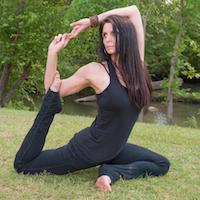After teaching middle school English for 21 years, I found myself transferring to our district’s alternative high school six years ago.
I needed a change from an environment surrounded by early adolescents, and to be quite honest, a break from a drama-filled faculty that I had been working with for over two decades.
I have always had a heart for at-risk youth—actually, a heart for anyone who has been dealt a less than ideal blow in life—so this new position was a welcomed change. Many of the students I work with now have been expelled from their home schools for alcohol and drug offenses, fighting, and even sexually-based offenses. Some come from “good” homes, while some come from homes where an incarcerated parent is the norm. Many have been sexually, physically, and/or emotionally abused and live in homes where substance abuse is the standard.
Studies show that students who attend alternative schools have a higher risk of incarceration as adults, so four years ago, I attended Prison Yoga Project training in order to incorporate yoga into the school day for my students. My objective was to give the students a tool to deal with life’s crazy blows.
Although the training was geared toward incarcerated adults, many of the methods I learned can be used to preclude these youth from the self-fulfilling prophecy that society has assigned to them. This past summer, while I was being interviewed by a radio host about my prison yoga nonprofit, she posed the question, “Wouldn’t it be great if you could offer yoga to young people before they found themselves behind bars?”
It wasn’t that I hadn’t tried to get my school district to allow me to teach yoga; I had. I just hadn’t tried hard enough. Her statement made me revisit my prior attempts, and the next week, I was sitting in the office of the director of student services with more assertive intentions.
After presenting him with the evidence of all the benefits of yoga for youth, he and my principal agreed to allow me to teach it. It was my chance to implement a much-needed program, but I also realized that I had to make it work. I had to show that it would benefit our student body.
The school I teach in is technology based, with students getting the majority of their instruction delivered by computer. Sadly, most of their day is also spent with their faces glued to a cell phone, so yoga is a welcome diversion from technology overload.
The majority of people today have lost the art of face-to-face communication. Just look around when in a restaurant. Whole families are more interested in what is on a screen than interacting with each other. Add this on top of all the trauma at-risk youth face, and they are at a more serious disadvantage than the average youth.
So what are some of the best practices I’ve discovered while teaching yoga to at-risk youth?
Begin with the breath.
The first several classes (5 to 10) should focus on establishing the breath: breathing in and out through the nose (if possible), taking deliberate slower four-to-five-second inhales and four-to-five-second exhales, and breathing deeply into the belly.
I’ve found that Bryan Kest’s three-part breathing cues, along with the music of Michael and Stephanie Johnson of Osel Music, are helpful when teaching at-risk youth yoga breathing. The cues and music offer tangible and understandable cues to keep the students focused and on track. I also teach yoga to students at the University of South Carolina and have discovered that most young people (well, all people) don’t know how to breathe efficiently. Teaching them while they are young can lead to life-long healthier breathing and less illness.
Allow students to meditate in savasana.
This goes against most of what I’ve learned as a yoga instructor. Mediation and relaxation are not the same thing, but I’ve found that allowing high school aged students to meditate in savasana rather than sukhasana or vajrasana is actually a benefit to them. I rarely have a student fall asleep, and they are able to focus on their physical sensations more efficiently while lying down.
During meditation, I guide students through a vippasana meditation of sorts, isolating their focus to specific area of their body and cueing them to notice what they feel there. All the while, I am directing them to continue linking the rhythm and the breath. As students become more efficient with their breathing and body awareness, we can strategically introduce meditating in more challenging seated postures.
The guided meditation can also keep the students’ thoughts from getting out of control. By reeling them back in with the breath and the rhythm, they can begin to control their thoughts.
Introduce postures in small steps.
At-risk youth often come to me with a lack of physical activity and poor health habits. Growing up in homes where exercise may not be the norm and a healthy lifestyle is not supported, I must be mindful that physical prowess is not typically their strength.
In addition, many are addicted to or abuse drugs and alcohol, and their bodies are not their friends. Introducing difficult or long sequences of postures when they are not physically capable of handling them could scare them away or encourage an aversion to yoga. Therefore, it is imperative to introduce postures one at a time.
There is also the need to link the movement to the breath and rhythm we have established in phase one, so I begin small. I always begin with mountain pose and move them to extended mountain while linking the movements to the breath and rhythm. The next day, we may add in uttanasana and ardha uttanasana, and so on. The goal is not to have them contort themselves into crazy postures or create an intense power yoga sequence, but to become mindful of how the body, mind, and breath are connected. Hopefully, starting small will pique their curiosity so that they will explore yoga more on their own in the future and become more mindful and less reactive to their environmental stressors.
Emphasize the difference between relaxation and meditation.
Sivananda yoga makes a clear distinction between relaxation and meditation, and I also want my students to know the difference.
Our classes are generally divided into three parts. First, I introduce the asana or asanas for the day and follow it up with meditation. In both of these phases, I have the students focus on the breath and the rhythm. The asana practice is a moving meditation to get all the wiggles out so that the students can lie in savasana and take the practice deeper.
I have them focus on their bodies in segments, tensing and releasing the tension through breath as they meditate. This practice allows any remaining tension to dissolve, if possible. However, in relaxation, I play more soothing, less rigid music, where breath is not the focus, but a peaceful drishti in the mind’s eye. I remind them that they are no longer creating a rhythm with their breath, but breathing naturally, allowing the heaviness of their bodies to sink and ultimately find relaxation.
Use props.
At-risk youth love props. Many of them have never had someone place a lavender pillow over their eyes, a sandbag on their belly, or shown them how to place a bolster under their knees in savasana to relieve low back pain. It may have been years since a parent figure has placed a blanket atop of them, creating a sense of comfort for them. These are all little non-threatening gestures that show them that someone cares for them.
However, the use of props should be student driven. Never place a prop on a student without his or her consent or have them arrange the props themselves. Small modifications can mean more than one can know. I have also discovered that students love herbal tea and many have never been exposed to it. I use all these opportunities to teach them ways to practice self-care. They now come in and brew their own tea without question. It is nice to see self-confidence emerging.
It is my hope that my students will leave my classroom with healthier ways to cope and to understand there is a better way despite their circumstances. By taking the time to teach them yoga, I also hope to show them that there are adults who care about them and where they are headed and hopefully not to one of my prison yoga classes in the future.
~
Author: Angela Still
Image: Pixabay
Editor: Catherine Monkman
Copy Editor: Lieselle Davidson
Social Editor: Lieselle Davidson


 Share on bsky
Share on bsky





Read 0 comments and reply